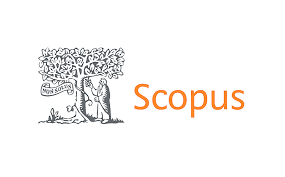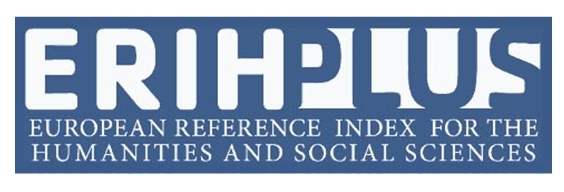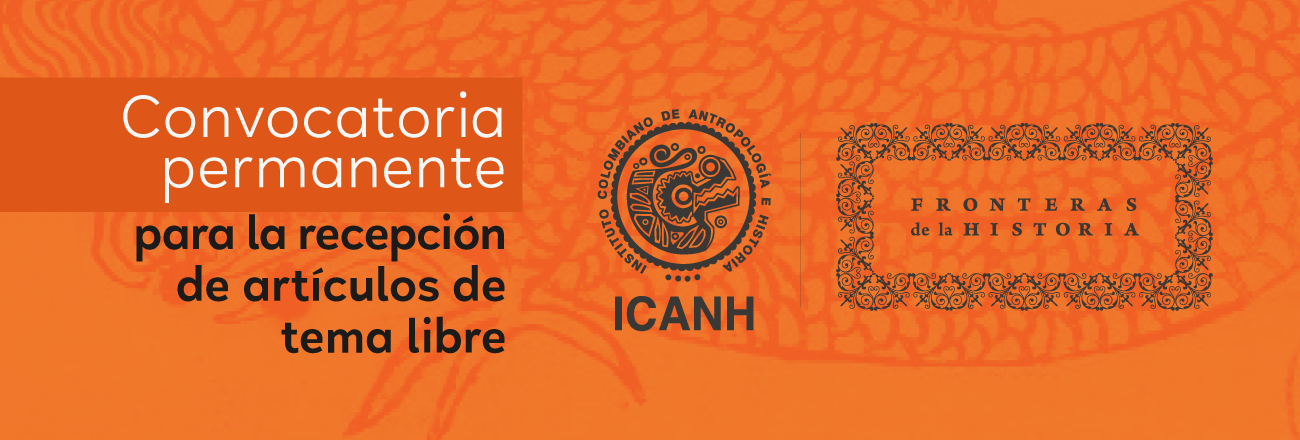The artistic collection of the bishop of Santiago de Chile, Luis Francisco Romero, 1707
Abstract
In the modern era, the Laws of the Indies required that Catholic bishops assigned to a post in the Spanish Americas submit an inventory of the personal belongings to be relocated with them. In conformance with this mandate, in the year prior to taking charge of the diocese of Santiago de Chile in 1708, don Luis Francisco Romero’s personal items were documented in preparation for their shipment from Cusco. This registry, which includes Romero’s collection of artworks, is maintained in the General Archive of the Indies in Seville. For the duration of Romero’s decade-long tenure in Santiago, his art collection was among the most illustrious in all of Chile, functioning as an identifying element of his social and professional status. This study seeks to identify the contents of this collection, and to understand the role this collection played in the larger circulation of artworks not only between Cusco and Santiago, but also among Europe, Asia, and the Americas. Finally, and uniting the focal themes of art, status, and circulation, the study reveals that Romero inherited works from the estate of Manuel de Mollinedo y Angulo, who served as archbishop of Cusco from 1673 until his death in 1699.
Downloads
References
Alcalá, L. E. (2007): “‘De compras por Europa’: Procuradores jesuitas y cultura material en Nueva España”, Revista Goya, 318, 2007, pp. 141-158.
Benavente Velarde, T. (1995): Pintores cusqueños de la colonia, Cusco, Municipalidad de Qosqo.
Burke, M. y P. Cherry (1997): Collections of Paintings in Madrid, 1601-1755, 2 vols., Los Angeles, Provenance Index of the Getty Information Institute.
Carrió-Invernizzi, D. (2008): El gobierno de las imágenes: Ceremonial y mecenazgo en la Italia española segunda mitad del siglo XVII, Madrid, Iberoamericana.
Carrió-Invernizzi, D. (2016): “Manuel de Lira, Spanish ambassador to The Hague (1671-1678). The home of the ambassador and his role as agent of artists and art collectors”, en D. Carrió-Invernizzi, dir., Embajadores culturales: Transferencias y lealtades de la diplomacia española de la Edad Moderna, Madrid, Universidad Nacional de Educación a Distancia, pp. 205-236.
Cherry, P. (1997): “Seventeenth-Century Spanish Taste”, en M. Burke y P. Cherry, eds., Collections of Paintings in Madrid, 1601-1755, Los Angeles, Provenance Index of the Getty Information Institute, pp. 1-107.
Cornejo Bouroncle, J. (1960): Derroteros de arte cuzqueño: Datos para una historia del arte en el Perú, Cusco, Ediciones Inca.
Cruz de Amenábar, I. (1986): Arte y sociedad en Chile 1550-1650, Santiago, Ediciones Universidad Católica de Chile.
Cuadra Gormaz, G. (1982): Familias chilenas. Origen y desarrollo de las familias chilenas. 2 vols. [3.a ed.], Santiago, Editorial Zamorano y Caperán.
Espejo, J. L. (1967): Nobiliario de la Capitanía General de Chile, Santiago, Editorial Andrés Bello.
Gramatke, C. (2020): “‘Llegó en malísimo estado la estatua de Juan Luis de Gonzaga’. La dificultosa organización del envío de obras de arte en los siglos XVII y XVIII desde Europa a las instituciones jesuíticas de las Américas”, en F. Quiles, P. Amador y M Fernández, eds., Tornaviaje: Tránsito artístico entre los virreinatos americanos y la metrópolis, Santiago de Compostela y Sevilla, Universo Barroco Iberoamericano, 11, pp. 149-173.
Hanisch, W. (1968): “Miscelánea histórica: La biblioteca del Obispo don Luis Francisco Romero”, Boletín de la Academia chilena de la historia, 78, pp. 200-206.
Henry, C. (2022): Playful Pictures: Art, Leisure, and Entertainment in the Venetian Renaissance Home, University Park, PA, Penn State University Press.
Holguera Cabrera, A. (2020): “Noticias inéditas sobre el coleccionismo de pintura europea en la Lima borbónica”, en F. Quiles, P. Amador y M Fernández, eds., Tornaviaje: Transito artístico entre los virreinatos americanos y la metrópolis, Santiago de Compostela y Sevilla, Universo Barroco Iberoamericano, 11, pp. 335-354.
Jewitt, J. R. (2022): “Titian and textile: Rediscovering the Loredan Collection between Venice and Brescia”, Journal of the History of Collection, 2022, fhac046. DOI: https://doi.org/10.1093/jhc/fhac046.
Jiménez Jiménez, I. (2014): “La colección pictórica americana del duque de la Plata, virrey del Perú”, Cuadernos de arte, 45, pp. 113-128.
Kennedy Troya, A. (1998): “Circuitos artísticos interregionales: De Quito a Chile siglos XVIII y XIX”, Historia, 31, pp. 87-111.
Kinkead, D. (1984): “Juan de Luzón and the Sevillian Painting Trade with the New World in the Second Half of the Seventeenth Century”, The Art Bulletin, 66 (2), pp. 303-310.
León Pinelo, A. de (1681): Recopilación de leyes de los reynos de las Indias, 4 tomos, Madrid, Julián de Paredes.
Lorenzo Schiaffino, S. (1990): “Monseñor Luis Francisco Romero: Su episcopado en Santiago y en Quito”, Boletín de la Academia Chilena de la Historia,101, pp. 235-280.
Loughman, J. y J. M. Montias (2000): Public and Private Spaces: Works of Art in Seventeenth-Century Dutch Houses, Zwolle, Waanders Publishers.
Lovell, M. M. (2019): “Trophy Heads at Monticello”, en G. Boudreau y M. Lovell, eds., A Material World: Culture, Society, and the Life of Things in Early Anglo-America, University Park, PA, Pennsylvania State University Press.
Mebold, L. (1982): “Las últimas series de pintura colonial en Chile”, Revista Universitaria, 8, pp. 120-139.
Mesa J. de y T. Gisbert (1982): Historia de la pintura cuzqueña, Tomo 1, Lima, Imprenta Santiago Valverde S. A.
Ovieda Cavada, C. (1979): Los obispos de Chile 1561-1978, Santiago, Editorial Salesiana.
Schenke, J. (2017): “Sobre el uso del término mestizo en la historiografía de las imágenes en Chile. Una propuesta crítica.”, Revista Fronteras de la Historia, 22 (1), pp. 70-109.
Schenke, J. (2021): “Arte colonial en Santiago de Chile: Causas de una producción no documentada y propuesta metodológica para una renovación historiográfica”, Revista Goya, 376, pp. 183-199.
Schmitter, M. (2021): The Art Collector in Early Modern Italy: Andrea Odoni and his Venetian Palace, Cambridge, New York, Cambridge University Press.
Schwartz, G. (2006): “Some Questions Concerning Inventory Research”, en A. Golahny, M.M. Mochizuki y L. Vergara, eds., In His Milieu: Essays on Netherlandish Art in Memory of John Michael Montias, Amsterdam, Amsterdam University Press, pp. 403-410.
Scocchera, V. (2022): “‘Que el procurador lo pase a mis manos’: encargos de devoción y embargos temporales en el navío San Fernando (Río de la Plata, 1767), Temas americanistas, 48, pp. 474-506.
Stanfield-Mazzi, M. (2009): “The Possessor’s Agency: Private Art Collecting in the Colonial Andes”, Colonial Latin American Review 18 (3), pp. 339-364.
Stratton-Pruitt, S. (2013): “Paintings in the Home in Spanish Colonial America”, en R. Aste, ed., Behind Closed Doors: Art in the Spanish American Home, 1492-1898, New York, The Monacelli Press y Brooklyn Museum.
Trusted, M. (2009): “Propaganda and Luxury: Small-Scale Baroque Sculptures in Viceregal America and the Philippines”, en D. Pierce y R. Otsuka, eds., Asia and Spanish America: Trans-Pacific Artistic and Cultural Exchange, 1500-1850, Denver, Denver Art Museum, pp. 151-163.
Valenzuela, J. (2005): “Afán de prestigio y movilidad social: los espejos de la apariencia”, en R. Sagredo y C. Gazmuri, directores, Historia de la vida privada en Chile, Tomo 1, Santiago, Taurus, pp. 70-93.
Van Ginhoven, S. (2017): Connecting Art Markets: Guilliam Forchondt’s Dealership in Antwerp (c. 1632–78) and the Overseas Paintings Trade, Leiden, Brill.
Villanueva Urteaga, H. (1985-1986) “El testamento y dos codicilos del obispo Mollinedo y Angulo”, Revista histórica, 35, pp. 9-34.
Villanueva Urteaga, H. (1989): “Los Mollinedo y el arte del Cuzco colonial”, Boletín del Instituto Riva-Agüero,16, pp. 209-219.
Zamorano Varea, P. (2010): Prácticas de religiosidad en el mundo familiar y doméstico. Santiago, siglo XVIII: Las imágenes religiosas “por lo que representan” y ¿cómo se presentan?, Revista de historia social y de las mentalidades, 14 (2), pp. 173-215.
Copyright (c) 2023 Catherine Burdick

This work is licensed under a Creative Commons Attribution-NonCommercial-ShareAlike 4.0 International License.

Esta obra está bajo licencia internacional Creative Commons Reconocimiento-NoComercial-CompartirIgual 4.0.









_18.09_.00_1.png)


















